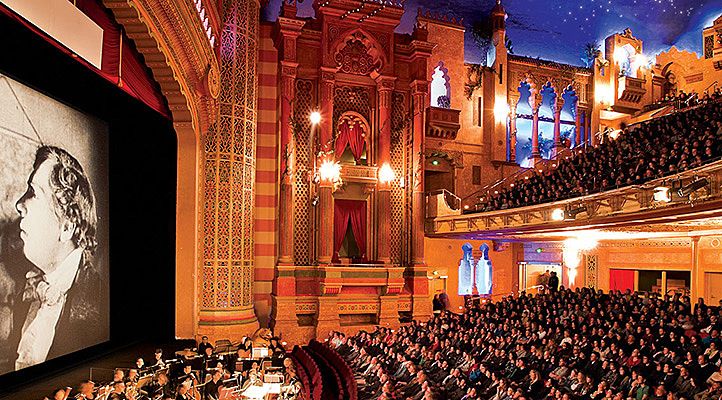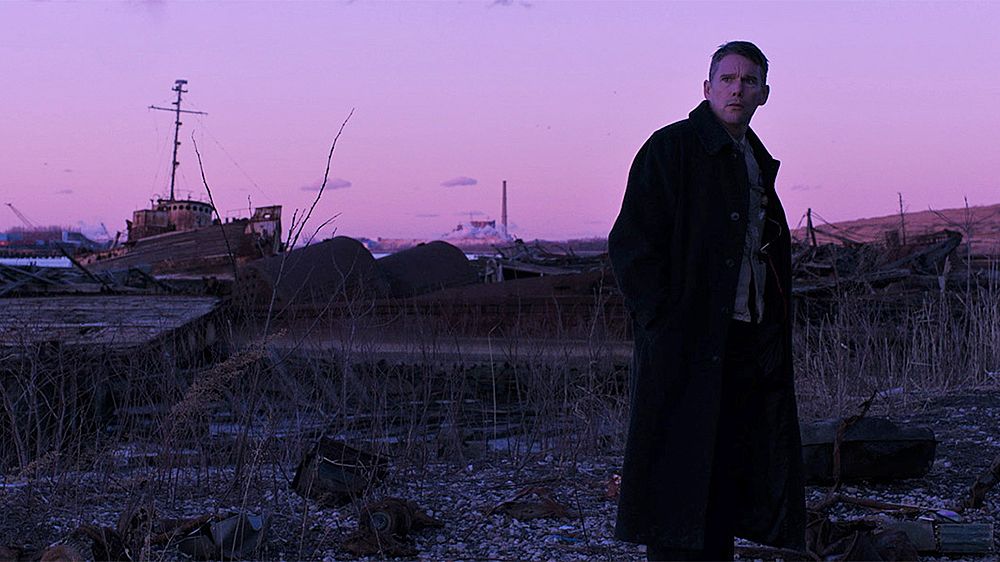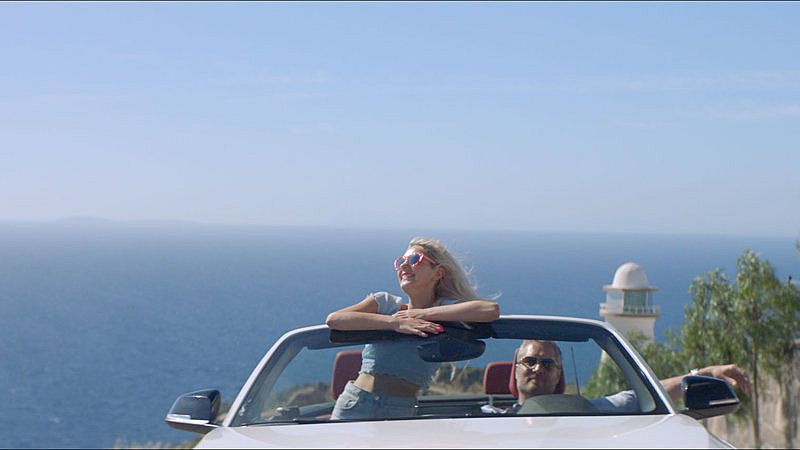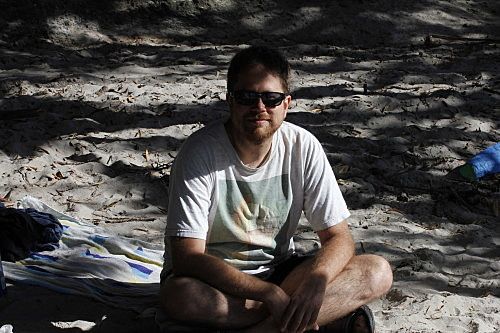The Future of Cinema: The Film Festival at 50
Nearing the start of the New Zealand International Film Festival, Doug Dillaman considers what role the festival plays in this changing era of film.
Nearing the start of the New Zealand International Film Festival, Doug Dillaman considers what role the festival plays in this changing era of film.
In 2000, I saw American writer/director Paul Schrader speak at a panel, discussing what the future was for the medium of film now that this ‘digital video’ phenomenon had found its way to screen. This was the summer after The Blair Witch Project, the first ‘film’ shot on digital video to get a major release, blew up huge. Schrader began by discussing, of all things, illuminated manuscripts. In their time, they were the most treasured form of expression imaginable. Now, they are unknown to all but a few, who travel great distances to see them in their original condition, carefully stored by those who treasure them. “I have seen the future of film,” Schrader said, “and it is illuminated manuscripts.”
Schrader – who, coincidentally, has a film of his own, First Reformed, in this year’s New Zealand International Film Festival – was speaking about celluloid, which in the subsequent 18 years has gone from the principal delivery method for screening movies to virtually nonexistent. (This year features two 35mm prints, The Atlantic and Raise the Red Lantern, more than in the last few years combined.) In recent years, however, I’ve wondered if his prediction will also come to pass for the feature film as we know it.
For many decades, feature filmmaking was largely considered the pinnacle of audiovisual storytelling. But the rise of long-form prestige television drama and short-form videos – to say nothing of the impact of video gaming, a much larger industry that has consistently encroached on the storytelling that was once the province of movies – has deeply eroded its supremacy. And the delivery of high-speed internet creates the illusion of unlimited viewing possibilities without ever leaving our couches (more on that illusion later).
There’s no reason to expect that cinema will regain its seat on the throne. But will it continue to have a principal role in our culture?
There’s no reason to expect that cinema will regain its seat on the throne. But will it continue to have a principal role in our culture? Will it fade to a secondary role – like, say, theatre, with a passionate audience within its niche, but neglected by most with the exception of the occasional giant production? Or will it go the way of radio plays and illuminated manuscripts? The reflexive answer that many optimists give is that people will always need to come together. But I am unconvinced, and even if this is true, I am unconvinced that anything more than a steady diet of Disney/Marvel/Star Wars product (excuse me, content) is required to fill this need.
The last few years have convinced me that nothing – be it celluloid projection or American democratic norms – should be taken for granted. If we want cinema of even the remotest ambition to thrive – hell, if we want it to survive – we need to fight for it.
*
For 50 years, the festival has been bringing international and local cinema to Tāmaki Makaurau Auckland. It started as the Auckland International Film Festival – not to be confused with the contemporary scam operation – and amalgamated with the Wellington branch in 1984 to grow into the current New Zealand International Film Festival. Fifty years ago we didn’t have video stores or video players, we were six years away from our second television station, and only three New Zealand features had been produced since World War 2. And the festival brought its first selection of 20 international films (including both features and shorts) to Auckland.
It’s fascinating looking through the list of films that NZIFF has put on Letterboxd (along with their entire subsequent Auckland programming) and noting that, despite its expanded repertoire in recent years, it’s stayed remarkably true to that initial programme. There’s at least two bona fide masterpieces (Au Hasard Balthazar, The Red and The White), some little-remembered films by respected masters (Satyajit Ray’s The Adventures of Goopy and Bagha, Andrzej Wajda’s Everything For Sale), a weird genre film (who knew when they saw Stereo that David Cronenberg would become an internationally respected master and return to the fest as recently as 2014?), a kid’s cartoon (Springtime), and several films that you’d never see hide nor hair of again.
What comes through is an underlying passion to provide for as broad a range of appetites as possible while providing a specific curatorial sensibility that is not merely sweeping up the ‘best of the best,’ but digging through the weeds to give audiences a chance to see films they may never be able to see again. In our age of digital plenty, one assumes that never being able to see films again is no longer an issue, until you start looking for films from even recent festivals and realise just how much has been left behind. There are hundreds – if not thousands – of NZIFF films that you’ll never find on iTunes, Google Play, Neon or Netflix, and even the most devoted importer of DVDs or illegal downloader will still face massive gaps.
is streaming films at home a substitute for the big screen?
But even if by some miracle you could find them, is streaming films at home a substitute for the big screen? I recognise that there are those who prefer their couch to the cinema, and that seeing movies regularly in a movie theatre is a privilege not all can afford. But for me the cinema is the only place I can truly get lost in a film, never tempted by a phone, lured to pause for a bathroom break, or distracted by forgotten chores. It focuses attention, and in doing so can create a collective emotional response greater than any possible at home. And while breaches of etiquette had been growing to epic proportions not so long ago, the festival’s welcome pre-title slideshow seems to have charmed audiences into substantially better behaviour.
Taking pride of place among Auckland’s venues, of course, is the mighty Civic. It’s a crime that for 50 weeks of the year this majestic venue is off-limits to films. However, the two weeks of NZIFF go a long way to making up for it. Some of my greatest festival memories are in front of that screen: from a crowd going wild at the first ‘instant replay’ in Thai actioner Ong-Bak to 2000 people flinching in unison at ‘that’ moment in Michael Haneke’s Hidden (Caché), from soaking up Under the Skin in the front row of the balcony to being hypnotised by A Ghost Story last year in the fifth row of the stalls, and of course every single time the lights dim and a new freshly surprised subset of the audience discovers the shooting stars of the ceiling for the first time.
Putting aside the basic virtues of the cinema experience, there’s also an intensely social aspect that develops over repeated festivals. I’ve met some of my best friends through the festival, and stay connected with others yearly at myriad screenings. My wife would argue that our first date was at a festival launch in 2013. But even if the festival doesn’t lead to your wedding, having a group of friends to pick apart films with afterwards can lead to fantastic post-film chats that enhance the film experience, in my case including virulent disagreements about the merits of Amer and a collective attempt to understand what the hell happened in Post Tenebras Lux. And even experiencing collective walkouts during films you love can be their own memorable experience, as I learned at the “ferocious and funny” Greek Dogtooth and the vicious climax to Tsai Ming-Liang’s superficially pretty The Wayward Cloud. (Those looking to experience a walkout themselves are directed this year to the innocuously titled Holiday – but read the censor’s warning, as many won’t, before booking your ticket.)
NZIFF’s penchant for flying in visiting filmmakers is an often-underappreciated privilege. Certain films almost demand a filmmaker to explain more, such as Heath Cozens’ disabled-wrestling documentary Doglegs. Filmmakers are more often than not wildly approachable, and I’ve treasured chats with Ti West and Chris Sivertson, which fuelled me in my own filmmaking. French filmmakers Metamkine created an unrepeatable live performance using celluloid they sometimes develop outdoors. Meeting Best Worst Movie director Michael Paul Stephenson in 2008 led, improbably, to shooting a scene for Ghost Shark 2: Urban Jaws in LA with actors from Troll 2, The Room and Birdemic: Shock and Terror. Q&As themselves can of course be a wildly mixed bag – there are 20 or so people I know who have been permanently traumatised by hearing H.P. Lovecraft’s definition of horror several years in succession – but at their best they can be an invaluable addition to the film experience.
It’s rare that an international filmmaker catapults to much larger success off the back of NZIFF, but for local filmmakers, the festival can literally determine whether their films ever see the light of day, and certainly whether they see the light of cinemas. The New Zealand Film Commission has historically provided finishing funds for local films accepted into NZIFF, although in the post-celluloid era I believe this support has diminished. NZIFF’s continued commitment to supporting local cinema has nourished several filmmakers, from emerging documentarian duo Christopher Pryor and Miriam Smith and the uncategorisable Florian Habicht to veterans Costa Botes and Shirley Horrocks. The recent introduction of a short film competition with a cash prize has given not just a bigger stage for up-and-coming filmmakers but also real cash to help offset the costs of their project. And it should be noted that NZIFF is one of relatively few film festivals to consistently pay filmmakers.
One might snidely note that the flipside of this curatorial role is that films rejected by NZIFF are doomed. To some extent, I would agree that it’s unfortunate that another cinematic platform for dramas – call it the Aotearoa Fringe Film Festival – hasn’t emerged, although DocEdge has gone a long way towards filling this gap for Kiwi documentarians. On the other hand, as a filmmaker who’s been rejected by NZIFF, I can honestly say getting rejected the first time was the best thing for the feature I wrote and directed, Jake. We got very honest feedback from festival director Bill Gosden and, after licking our wounds, we wound up taking another edit pass, cutting 17 minutes from the film and making it unquestionably stronger.
This gatekeeping role, on an international scale, plays a huge part in getting films through our onerous and expensive censorship regime. The cost for drama films with potentially restricted content is achingly high, and without NZIFF shepherding dozens of films through this process every year, many challenging films could simply never screen legally in Aotearoa. And with exhibitors and distributors taking fewer and fewer chances, this contribution becomes more important with each passing year.
*
So, what does all this add up to for the future? It’s hard to say. NZIFF has never been one to jump on the latest bandwagon. While other festivals have integrated VR and AR components to their programmes or leaned increasingly heavily on made-for-television content, the closest NZIFF has come to following new fashion was screening all six hours of Top of the Lake: China Girl last year, a programming choice unrepeated this year and likely to be a one-off thanks to its local provenance. Even a brief venture into 3-D seems to have been abandoned.
But look closer, and you’ll see quiet hints of forward-looking initiatives. NZIFF recently launched an on-demand site that gives a second home for local films, including directors Simon Ogston, Costa Botes, Florian Habicht, and Adam Luxton and Summer Agnew, whose On an Unknown Beach is by my lights the overlooked treasure of New Zealand cinema this decade. (A lot of people disagree with me on this one, by the way, but it’ll only cost you $6.99 to form your own opinion.) This year, for the first time in memory, there is an audio-descriptive screening of a film for the vision impaired. Over the past five years, they’ve been quietly hosting screenings at the Civic for children from low-decile schools to introduce them to the glory of cinema, and this year the Play-It-Forward scheme encourages festival attendees who can afford it to facilitate more trips for those who can’t. Investing now in making sure a new generation experiences the cinema means it’s more likely that they’ll value it when they can eventually buy their own tickets, the theory goes.
The future is ours
I hope so. The kids who sat next to me at The Red Turtle at the Civic a couple years back were besotted. And seeing youngish audiences at The Duke of Burgundy and Bad Genius left me convinced cinema hasn’t been wholly abandoned by a generation raised on downloads, even if there are still plenty of NZIFF screenings where it appears I’m the youngest person there (and I ain’t young).
Ultimately, though, the festival is a once-a-year event, and even if it takes pride of place in New Zealand cinephilia, it can’t survive as more than a novelty on its own. It needs an ecosystem of exhibitors dedicated to making cinema thrive throughout the year. To this end, it’s been heartening to see the efforts of the Academy in Auckland with their Dystopian Film Festival and Voyage Du Noir, the recent uptick in events at the Hollywood in Avondale, and the tireless efforts of the Roxy in Wellington, all of whom are stretching beyond merely programming what distributors send to them to provide memorable cinema experiences.
Without audiences, though, it can’t last. As somebody who’s routinely spent a good chunk of my earnings on film festival tickets for the last decade, I’m routinely dispirited when film industry members skip the festival entirely but use it as a shopping list for films to download. I understand the temptation, and I can’t pretend I haven’t succumbed to it from time to time, but there’s nothing about that model that’s sustainable. One of the ugly truths of capitalism is that we vote with our dollars. Ten years ago, nobody thought that most of our bookstores and video stores would be gone, but that’s what we voted for. Of course you don’t have to value the cinematic experience, or even NZIFF – but by no means should you take it for granted. The future is ours.





